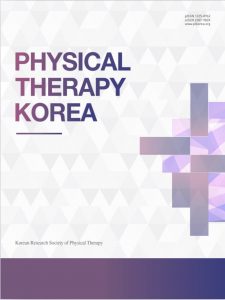Publications

Immediate Effects of High-frequency Diathermy on Muscle Architecture and Flexibility in Subjects With Gastrocnemius Tightness
Authors: Ji-hyun Kim 1, Joo-hee Park 2, Hyeo-bin Yoon 1, Jun-hyeok Lee 1, Hye-seon Jeon 2, 3
Affiliations:
- Department of Physical Therapy, The Graduate School, Yonsei University
- Department of Physical Therapy, College of Health Science, Yonsei University
- Department of Ergonomic Therapy, The Graduate School of Health and Environment, Yonsei University, Wonju, Korea
Journal: Journal of Physical Therapy Korea - May 2020, Volume 27, No.2, Page 133-139 (DOI: 10.12674/ptk.2020.27.2.133)
-
Field & Applications:
- Medical
- Treatment evaluation
- Physiotherapy
Background: The gastrocnemius (GCM) is one of the lower extremity muscles that tend to tighten easily. GCM tightness results in limited ankle dorsi-flexion (DF), especially when the knee joint is fully extended. Joint flexibility is determined by the morphological and physiological characteristics of joints, muscles, tendons, and ligaments. Impaired joint flexibility can be attributed to increased susceptibility to muscle injury. High-frequency diathermy is clinically used to reduce pain and muscle tightness and to improve limited range of motion.
Objects: This study aimed to investigate the immediate effects of high-frequency therapy in subjects with GCM tightness.
Methods: The study was designed as a one-group before–after trial. The subjects included 28 volunteers with GCM tightness (an active ankle DF angle of less than 12°) without any known neurological and musculoskeletal pathologies in the ankle and calf areas. WINBACK Transfer Electrode Capacitive and Resistive Therapy equipment was used to apply high-frequency therapy to the subjects’ GCMs for 10–15 minutes. The pennation angle and the fascicle length of the GCM were measured using ultrasonography. The flexibility of the ankle joint, peak torque to the passive ankle DF (Biodex), and soft tissue stiffness (MyotonPRO) were also measured.
Results: The pennation angle was significantly decreased following the treatment; however, no significant difference in the fascicle length was found (p<0.05). The flexibility was significantly increased and both the passive peak torque to passive ankle DF and the soft tissue stiffness significantly decreased (p<0.05).
Conclusion: High-frequency therapy is immediately effective for improving the muscle’s architectural properties and functional factors in subjects with GCM tightness. Further longitudinal clinical studies are required to investigate the long-term effects of high-frequency therapy on subjects with GCM tightness from various causes.
Keywords: Ankle, Diathermy, Muscle tonus, Physical therapy modalities
This study demonstrated that HFD has a positive effect. HFD is clinically effective in terms of improving the PA, joint flexibility, muscle tone, stiffness, and joint torque of subjects with GCM tightness in a short period of time. However, the present study used a one-group pretest–posttest design. Longitudinal clinical studies are required to investigate the long-term effects of HFD on subjects with GCM tightness from various causes.


